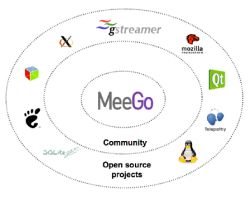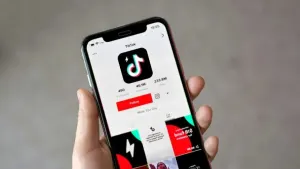 In case you hadn’t noticed, the mobile phone industry is now awash with operating systems. It was just a couple of years ago when smartphones came in only four flavors: Palm, Blackberry, Windows Mobile and Symbian. Now you can add to this list the iPhone OS, Android, Bada and Maemo. It’s great to have choice, but can present headaches for consumers, operators, and, perhaps more importantly, developers. So, you may be wondering why Nokia was this week talking about its strategy of having three operating systems.
In case you hadn’t noticed, the mobile phone industry is now awash with operating systems. It was just a couple of years ago when smartphones came in only four flavors: Palm, Blackberry, Windows Mobile and Symbian. Now you can add to this list the iPhone OS, Android, Bada and Maemo. It’s great to have choice, but can present headaches for consumers, operators, and, perhaps more importantly, developers. So, you may be wondering why Nokia was this week talking about its strategy of having three operating systems.
At the World Mobile Conference this week, the Finnish phone giant announced a new operating system, known as MeeGo. It’s a Linux-based platform that merges Nokia’s Maemo with Intel’s Moblin, and it’s designed to bring rich new user experiences to mobile computers, netbooks, tablets and the like. Nokia also produces devices running the ancient S40 platform, and the croaky S60 OS (soon to be replaced with the new Symbian 3 platform). But in a world of increasing fragmentation, is it really a good idea to be offering the bemused consumers and developers three flavors of Nokia?
We caught up with David Rivas, Vice President, Strategy and Business Development Software Platforms at Nokia to find out the thinking behind this strategy.
How and why did Nokia end up with three different mobile platforms?
 If we were having this conversation two years ago you’d be asking why it’s not the reverse. From a tech perspective, the three segments are clear. S40 is a mature platform which is very comfortable for the market it’s aimed at, and it’s what I like to call the ‘value’ segment. Symbian, or S60 as it has been until now, is targeted at the ‘value portion’ smartphone market, and it drives capability to lower price points. Meego offers a showcase for the class of experience similar to how we use our laptops in everyday life.
If we were having this conversation two years ago you’d be asking why it’s not the reverse. From a tech perspective, the three segments are clear. S40 is a mature platform which is very comfortable for the market it’s aimed at, and it’s what I like to call the ‘value’ segment. Symbian, or S60 as it has been until now, is targeted at the ‘value portion’ smartphone market, and it drives capability to lower price points. Meego offers a showcase for the class of experience similar to how we use our laptops in everyday life.
The question we were asking ourselves was how can we take our software offering down the road? The top two things we’ve done recently is to buy the Symbian Foundation and make it open source, and to buy Trolltech, and with it its Qt development framework.
So, what was going wrong before?
In the context of Symbian it was the lack of user interface renewal that was the problem. S60 was written a long time ago and it needed new energy. Programmers don’t like S60 because it’s difficult to develop for. We’ve fixed this with Qt, which is the most capable cross-platform framework in the industry.
Symbian 3 is planned for the first half of the year and Qt will be part of the platform. Because Qt is loved by developers we can expect to see lots of apps for the new Symbian platforms, as well as a decrease in development for S60. It’s true that Symbian S60 had missed a few rounds of UI renewal and it’s time to bring it up to standard, which is what Symbian 3 does. We’ve tripled performance, added multitouch support and a nice UI with lots of cool 3D effects. Symbian 4, which will push for release at the end of this year or beginning of the next year will further improve upon the performance and guts of the user experience.
How worried are you about the coming of Android to the market?
The more operating systems that are introduced, the better it is for us. That’s because it sends a clear statement to developers: you have to be able to hit a broad range of devices with a broad range of interfaces. The value proposition is very clear. In fact, the OS phenomenon is more about making value propositions to developers than it is the user. The only thing a consumer cares about is how cute it is, if it fits their lifestyle, and now, if it has a bunch of apps.
We are watching the Android rollout with great interest. It faces a lot of challenges right now regarding fragmentation. The industry should be asking Google what its motives are, and what will happen with Android in the future. Have any OEMs ever even seen a road map on Android from Google? I’m not sure they will have. When it comes to open source, Symbian is much more open.
There are a lot of questions that need to be answered but I find that the industry seems too preoccupied with the OS war. In actual fact, most consumers aren’t thinking about this. Instead of getting bogged down, we have to laser focus on the developer and offer them a platform that’s fun to developer for, offers a channel to market, and beautiful devices to run their apps on.

